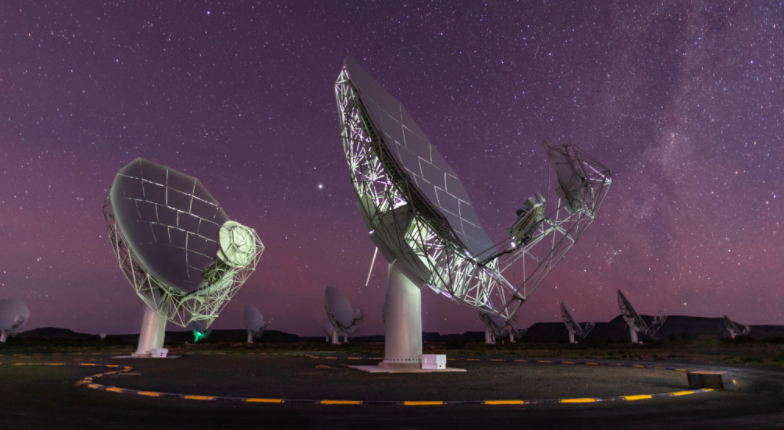A South African mega-telescope recently discovered not one galaxy far far away, but 20 previously undiscovered galaxies.
A group of 20 galaxies has been discovered with South Africa’s MeerKAT telescope, likely the most neutral hydrogen gas-rich group ever discovered, and it’s the first time this group has been identified, despite residing in a very well-studied area of the sky. pic.twitter.com/PXe66JS8Nr
— Khulu Phasiwe (@KhuluPhasiwe) July 6, 2021
About the new galaxies!
The large galaxy group or cluster of galaxies according to SARAO (The South African Radio Astronomy Observatory) is “likely the most neutral hydrogen gas-rich group ever discovered.”
It’s the first time this group has been identified according to SARAO, despite residing in a well-studied region of the sky.
And thanks to the brilliance of the MeerKAT telescope, which is able to pick up even the faintest of all radio waves, the galaxy group is no longer unknown.
Additionally, the group of galaxies is a rarity because “such a large number of [the] group members [have] so much neutral hydrogen.”
Why is neutral hydrogen important in this case?
Observing this hydrogen gas allows astronomers to understand the evolutionary processes that take place in galaxies.
While cold neutral hydrogen gas does embed most star-forming galaxies, to have so many group members exhibiting neutral hydrogen is curious. Essentially it allows astronomers to conclude that this galaxy group is “still in the process of assembly,” according to SARAO, meaning how galaxy groups assemble can be studied.
And for a treat of starry knowledge: the cold neutral hydrogen gas is what “acts as the raw fuel from which stars can eventually form.”
So if galaxies were gardens, then the group is like a flowerbed for budding stars.
And, as if galaxies weren’t stunning enough, this group is also enveloped in a red hue due to the hydrogen levels!
The galaxies influence each other
“The distribution of neutral hydrogen gas in these galaxies has revealed interesting, disturbed morphologies suggesting that these galaxies are… being influenced by their cosmic neighbours in the group”, notes Shilpa Ranchod MSc student of the University of Pretoria supervised by Prof. Roger Deane.
“…For example, we found an interacting pair of galaxies that will potentially merge to form a new galaxy with a completely transformed appearance,” Ranchod adds.
The Team and MeerKAT telescope
According to SARAO, the “galaxy group was discovered by the MeerKAT International Gigahertz Tiered Extragalactic Exploration (MIGHTEE) survey,” which beyond being a brilliant mouthful is one of the largest survey projects in progress with SA’s MeerKAT telescope. The team involved is comprised of numerous SA and international astronomers.
The mega-telescope that discovered the cluster of galaxies is called the MeerKAT Telescope, which according to The South African, has been at the “forefront of interstellar research in South Africa for years.”
The MeerKAT radio telescope is based in the Northern Cape, and aims to help answer fundamental questions about the formation and evolution of galaxies.
Picture: South Africa’s MeerKAT telescope

